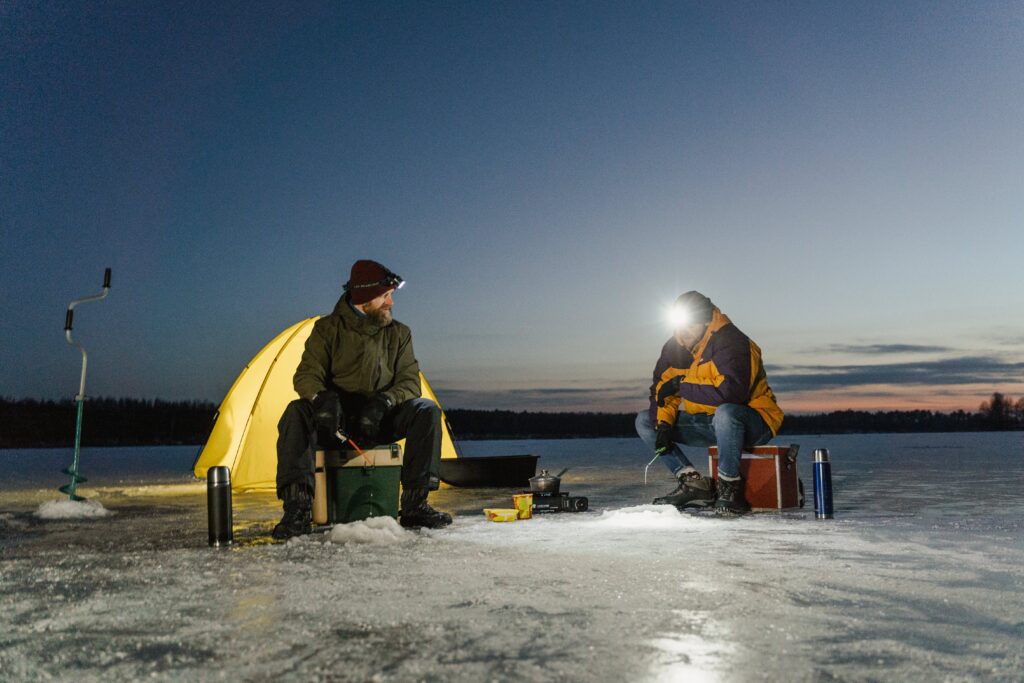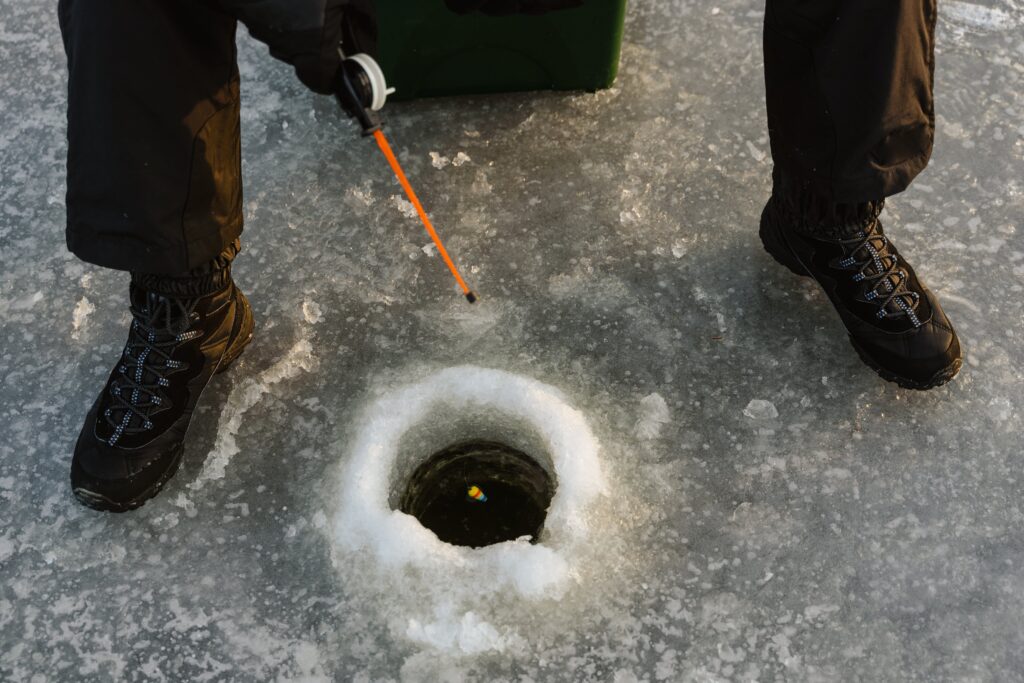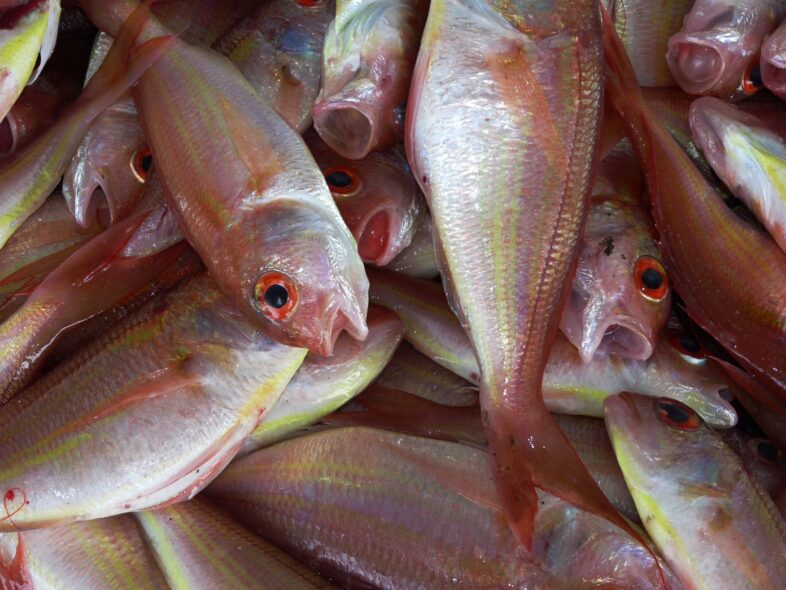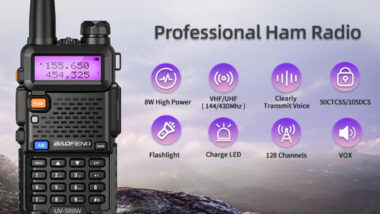Catching Fish a Crucial For Surviving

Imagine being stranded in the wilderness , you have no access to food or clean water. But in such a desperate situation, survival fishing becomes your lifeline. There are lots of ways to catch fish, not always an easy feat, but a skill you can learn.
Whether you’re an experienced angler or a novice, knowing how to catch fish with minimal equipment can mean the difference between going hungry and sustaining yourself.
Ice Fishing Rod Reel Combo Complete Set Ice Fishing Ket /Backpack, Seat Cleats Fishing Jigs Line (around $70)
This article explores various techniques for survival fishing, showcasing simple yet effective methods that require only basic or improvised tools. From building a makeshift fishing rod to mastering alternative baiting strategies, you’ll gain valuable insights on how to successfully catch fish and increase your chances of survival in the wild.
1. Hand Fishing for Survival
In survival situations, fishing can be a crucial skill to acquire food. Hand fishing, also known as noodling, is a technique that requires minimal equipment and relies on the use of your bare hands to catch fish. This technique has been practiced for centuries and is still utilized by many fishermen around the world. Through this method, you can catch a wide variety of fish, including catfish and carp.
2. Location and Timing
Hand fishing is best practiced in shallow waters such as rivers, lakes, and streams, where fish tend to gather near underwater structures like rocks or fallen trees. These structures provide hiding spots for fish and increase your chances of success.
Additionally, it is important to consider the timing of your hand fishing excursion. Fish tend to be more active during early morning or late afternoon hours, so plan your fishing trip accordingly.
To practice hand fishing, locate a promising spot with potential hiding spots for fish. Slowly submerge your arms into the water and find crevices or tunnels where fish may be hiding. With a rhythmic motion, move your hand closer to the fish’s hiding spot until you can touch it.
Gently lure the fish out with slow and steady movements, either by touching its body or placing your fingers in its mouth. Once the fish bites onto your hand, firmly grasp its lower jaw and lift it out of the water.
Tips and Tricks for Survival Fishing
- Be cautious of your surroundings and watch out for other creatures such as turtles or snakes that may also inhabit the underwater structures.
- Use gloves or protective gear to avoid injuries from fish with spines or sharp teeth.
- Stay patient and persistent. Hand fishing requires practice and experience to develop a good sense of where fish are likely to be hiding.
- Always respect the local laws and regulations regarding fishing, as hand fishing may not be permitted in certain areas.
2. Survival Bow Fishing
Bowfishing kit on Amazon
Survival bow fishing is a technique that combines archery skills with fishing to catch fish in water bodies. With basic archery equipment and a few modifications, you can create a versatile tool for both hunting and fishing. This technique is especially effective in clear waters where the fish are visible near the surface.
Equipment Needed
To practice survival bow fishing, you will need the following equipment:
- A sturdy traditional bow – Recurve bows are commonly used due to their portability and simplicity.
- Fishing arrow or arrow with a fish point – These arrows are specifically designed for bow fishing, with barbs or specialized heads to secure the catch.
- Bowfishing reel – A reel attached to the bow allows you to retrieve the line easily after shooting.
- Fishing line – A strong and durable fishing line is necessary to handle the weight and resistance of a caught fish.
Technique and Tips
When bowfishing, aim slightly below the target to account for refraction in the water. Look for visible fish near the surface and adjust your aim accordingly. Once you have spotted a fish, draw your bow smoothly and release the arrow, aiming to hit the fish. After the shot, use the bowfishing reel to retrieve the line and secure your catch. It is important to maintain control of the line to prevent the caught fish from escaping.
Some tips for survival bow fishing include:
- Practicing your aim and accuracy before relying on this technique for survival.
- Using polarized sunglasses to reduce glare and improve visibility in the water.
- Choosing areas with clear waters, as murky waters can hinder your ability to spot fish.
- Being aware of your surroundings and potential obstacles that may interfere with your shot.
3. Improvised Fishing Rod
When faced with a survival situation, it may not always be possible to carry a fishing rod with you. However, with some basic materials and tools that can be found in nature or easily improvised, you can construct a fishing rod to increase your chances of catching fish and ensuring your survival.
Materials and Tools
To construct an improvised fishing rod, you will need the following materials and tools:
- Sturdy branch or stick – Choose a branch that is long and flexible enough to serve as the main body of your fishing rod.
- Fishing line or cord – Nylon fishing line or strong cord can be used as your fishing line.
- Hooks – Carry a few small hooks or create your own from available resources such as safety pins or paperclips.
- Bait – Use natural bait such as worms, insects, or small pieces of food to attract fish.
Step-by-Step Construction
- Find a sturdy branch or stick and remove any protruding branches or leaves. The length of the branch should be approximately your height.
- Tie the fishing line or cord securely to one end of the branch, leaving a length of line extending beyond the tip.
- Attach the hook to the end of the line, ensuring it is securely fastened.
- Wind the remaining fishing line around the branch, creating multiple layers to increase strength and stability.
- Attach the bait to the hook, ensuring it is securely in place.
- Find a suitable location in the water and cast your improvised fishing rod, allowing the bait to sink to the desired depth.
- Monitor the fishing line for any movement or tugs, indicating a potential catch.
- When a fish bites, carefully reel it in using the improvised fishing rod, taking care not to snap the line or lose control.
Selecting Bait
As mentioned earlier, natural bait such as worms, insects, or small pieces of food can be used to attract fish. It is important to consider the type of fish you are targeting and match your bait accordingly. For example, worms are a versatile and commonly used bait that can attract a variety of fish species. Experiment with different bait options to determine what works best in your fishing location.
4. Spearfishing
Spearfishing is an ancient fishing technique that involves hunting and capturing fish using a specialized spear or pole. With a well-aimed thrust, you can catch fish underwater, making spearfishing an effective method for survival when near water bodies.
Equipment Needed
To practice spearfishing, you will need the following equipment:
- Spear or pole – Choose a spear or pole that is long enough to reach and penetrate the fish you plan to target. Some options include spearguns, Hawaiian slings, or handheld poles with barbed tips.
- Mask, snorkel, and fins – These essential diving gear items allow you to see and move efficiently underwater.
- Dive knife – A dive knife comes in handy for cutting free from entanglements or dispatching a speared fish.
- Wetsuit or dive skin – Depending on the water temperature, a wetsuit or dive skin can provide protection and insulation during prolonged periods underwater.
Technique and Tips
When spearfishing, it is important to dive silently and approach the fish stealthily. Identify your target fish and line up your spear or pole for a precise thrust. Aim for the vital organs or the head of the fish for a quick and clean kill. Take caution as some fish may have sharp spines or teeth that can cause injuries. Once the fish is speared, retrieve it and secure it to prevent it from escaping or becoming entangled.
Some tips for successful spearfishing include:
- Practicing breath-holding and diving techniques to increase your underwater time.
- Releasing any speared fish that do not meet legal or size regulations, as responsible fishing ensures sustainable resources.
- Learning about the local fish species and their habits to help you locate and target the most abundant or desirable fish.
- Using caution when spearfishing in unfamiliar or potentially dangerous waters, as strong currents or large predators may pose a risk.
5. Gorge Fishing
Gorge fishing is a passive fishing technique that involves the construction and strategic placement of gorges, which are primitive fishing traps. By channeling fish into these traps, you can efficiently harvest a large number of fish with minimal effort.
Construction of Gorges
To construct a gorge, you will need the following materials:
- Sturdy sticks or branches – Gather several long and sturdy sticks or branches to form the frame of the gorge.
- Vines or cordage – Use natural fibers or cordage to secure the sticks together and create a net-like structure.
- Rocks or weights – Find heavy rocks or other weights to anchor the gorge in place underwater.
Strategic Placement
Choose a location in the water where fish are likely to swim, such as narrow passages, river bends, or shallow areas with strong currents. Position the gorge diagonally across the waterway, leaving one end slightly open to lure fish in.
Harvesting Fish
Monitor the gorge regularly, checking for trapped fish. As fish swim into the narrow section of the gorge, they will become trapped, unable to escape due to the outward-facing stakes or sticks. Carefully retrieve the trapped fish by lifting the gorge out of the water, taking care not to lose any caught fish in the process.
6. Trotline Fishing
Trotline fishing is an effective technique for catching fish along a specific area, such as a riverbank or a stretch of water. A trotline consists of a main line with multiple baited hooks attached at intervals, allowing you to catch multiple fish simultaneously.
Preparing the Trotline
To prepare a trotline, you will need the following materials:
- Strong fishing line – Choose a durable fishing line that can withstand the weight and fighting of caught fish.
- Hooks – Attach a series of hooks evenly spaced along the trotline. The number of hooks depends on the legal limit and available fish species.
- Weights and floats – Secure weights to the ends of the trotline to keep it submerged, and attach floats or buoys at regular intervals to mark the location.
Baiting the Line
Baiting the hooks is crucial for attracting fish to your trotline. Use natural bait such as worms, small fish, or pieces of food that fish commonly prey upon. Attach the bait securely to each hook, ensuring that it will stay in place and entice fish to bite.
Setting and Checking the Trotline
Once the trotline is prepared and baited, secure one end to a sturdy anchor point on the shore or tie it to a tree. Slowly deploy the trotline into the water, ensuring it is taut and properly weighted to stay submerged. Space the hooks along the line at regular intervals. Leave the trotline in place for a predetermined amount of time, then return to check it periodically. When checking the trotline, carefully reel it in, removing any caught fish and replacing the bait as needed.
7. Fish Traps and Weirs
Fish traps and weirs are effective tools for capturing fish in larger quantities by utilizing their natural instincts and movements. These traps are designed to guide fish into an enclosed area where they become trapped, making it easier to harvest them for food.
Types of Fish Traps and Weirs
There are several types of fish traps and weirs that can be constructed in a survival situation, including:
- Funnel traps – These traps guide fish into progressively narrower sections until they are trapped in a central chamber.
- Basket traps – Basket traps are constructed with a closed top and an open bottom, allowing fish to swim in but making it difficult for them to escape.
- V-shaped weirs – These structures consist of two converging walls that channel fish towards a narrower exit point, where they become trapped.
Subheading 3: Building and Setting Up
Constructing fish traps and weirs requires a combination of natural materials and tools. Depending on the type of trap chosen, sticks, stones, vines, and other available resources can be used. Study the behavior and migration patterns of local fish species to determine the optimal location and design for your trap or weir. Carefully construct the trap, ensuring that it guides fish towards the desired capture point. Monitor the trap regularly and harvest trapped fish as needed.
8. Fishing with Improvised Net
In survival situations, it may be necessary to improvise your fishing tools, and creating a simple net is an effective way to catch fish in larger quantities. Nets can be constructed from available materials and are particularly effective in shallow waters where fish are concentrated.
Materials and Tools to Make a Net
To construct an improvised net, gather the following materials and tools:
- Strong fibers or cordage – Look for plant fibers, vines, or strong threads to create the netting.
- Sturdy branches or poles – Find long and flexible branches or poles to serve as the frame of the net.
- Small, sharp objects – These can be used to weave or attach the netting, such as thorns or small bones.
- Weights – Collect heavy rocks or other weights to keep the net submerged and prevent fish from escaping.
Making a Simple Net
- Start by creating the frame of the net using the sturdy branches or poles. Form a rectangular or circular shape, depending on your preference and available materials.
- Attach the netting fibers or cordage to the frame by tying or weaving them together. Ensure that the netting is secure and has small enough gaps to prevent fish from escaping.
- Attach weights to the bottom edge of the net to keep it submerged underwater.
- Find a suitable location in the water where fish are present, and submerge the net completely, ensuring that it is stretched out and covers a wide area.
- To catch fish, slowly and carefully lift the net out of the water, allowing it to enclose the fish as you do so. If fish are trapped, secure the net and retrieve the catch.
9. Ice Fishing a Skill to Learn for Survival

Ice fishing is a survival fishing technique that involves drilling or chiseling a hole through a frozen body of water to access fish below. It is particularly useful in winter or cold-weather scenarios where other fishing methods may not be feasible.
Tools and Equipment
To practice ice fishing, you will need the following tools and equipment:
- Ice auger or chisel – These tools are used to create a hole in the ice. An ice auger is a manual or motorized drill specifically designed for ice fishing. A chisel can also be used to chip away at the ice.
- Ice fishing rod and reel – Ice fishing rods are shorter and lighter than traditional fishing rods, making them more suitable for fishing through small holes in the ice.
- Ice fishing line and tackle – Use a specialized ice fishing line that is more resistant to freezing and a selection of ice fishing tackle, such as jigs or spoons.
- Ice skimmer or scoop – These tools are used to remove ice chips, slush, or debris from the fishing hole.
Technique and Safety
To practice ice fishing safely and effectively, follow these steps:
- Locate a frozen body of water that is safe for ice fishing. Ensure that the ice is thick enough to support your weight and the weight of your fishing gear. Consult local experts or authorities for guidelines on safe ice thickness.
- Use an ice auger or chisel to create a hole in the ice. Start with a small hole and gradually widen it until you can fit your fishing gear through.
- Set up your ice fishing rod and reel, attaching a suitable bait or lure to attract fish.
- Lower your fishing line into the hole and adjust the depth according to the known habits and preferences of the target fish species.
- Monitor the fishing line for any movement or tugs indicating a fish has taken the bait. Once you feel a bite, slowly and steadily reel in the fish, taking care not to jerk the line or lose control.
- Use the ice skimmer or scoop to remove any ice chips or debris from the hole, keeping it clear for continuous fishing and preventing any obstructions.
- Stay alert to changes in ice and weather conditions, as these can affect the safety of ice fishing. Watch for signs of weakening ice, such as cracking or shifting, and be prepared to leave if necessary.
10. Surviving Offshore
Surviving offshore, whether on a boat or a remote island, presents unique challenges when it comes to fishing for sustenance. However, with the right techniques and equipment considerations, you can increase your chances of catching fish and meeting your survival needs.
Opportunistic Fishing
When offshore, take advantage of any fishing opportunities that arise. Keep an eye out for birds diving into the water, as this can indicate the presence of baitfish and larger predator fish below. Seaweed patches or floating debris can also attract fish. Cast your line or use other fishing techniques near these areas to increase your chances of success.
Equipment Considerations
When packing for an offshore survival situation, consider including the following fishing equipment:
- Handline’s or fishing rods – Compact and lightweight fishing gear allows for easy storage and transportation.
- Assorted hooks, lures, and bait – Carry a variety of hooks, lures, and bait to adapt to different fishing conditions and target fish species.
- Fishing nets – If possible, pack a compact fishing net that can be used to catch fish near the surface in calmer waters.
- Gaff or landing net – These tools are useful for safely landing larger caught fish, allowing you to secure your catch with minimal risk.
Techniques and Tips
Some techniques and tips for offshore survival fishing include:
- Trolling: Attach a lure or bait to a fishing line and slowly move it behind a moving boat, simulating the movement of prey and attracting fish.
- Deep-sea fishing: Use heavier fishing equipment and rigs to target larger fish that inhabit deeper waters. Bottom fishing with sinkers or downriggers can be effective in these scenarios.
- Bait selection: Research the local fish species and their preferred bait. Use natural baits or lures that mimic their prey to increase your chances of attracting fish.
- Safety precautions: When fishing offshore, ensure that you are wearing a life jacket or have other safety equipment readily available. Be aware of weather and sea conditions, and always prioritize your safety.
Concluding Survival Fishing, Tips and Techniques
Remember, survival fishing is not just about catching fish; it is also about using the resources responsibly and sustainably. Respect local fishing regulations, catch only what you need, and strive to minimize unnecessary harm to fish populations and their habitats. With the right techniques, equipment, and mindset, survival fishing can be a reliable source of sustenance in challenging situations.





